Cats, like humans, have a variety of talents and abilities, but the one thing that they excel at the most is sleeping. Cats kill it when it comes to napping — that's why we use the term "catnap" after all. And how they position their body as they catch their zzzs is just as important as where they choose to sleep. You can learn a lot about your cat by taking a good look at their sleeping positions.
So the next time your cat takes a nap — like now, or five minutes from now — check out their sleeping position and see what it tells you about their personality. You might be surprised how accurate a reading you get from the way they cover their face or keep their paws pressed together. These are the 10 most common cat sleeping positions and what they mean.
The Meatloaf

In this position, the cat tucks their feet and paws under, with their tail curving around them. Their head and body remain vertical. This position indicates a cat who’s laid-back but fully aware of their surroundings. They’re equally ready for sleep or a surprise attack. They’re not super aggressive but they’re nobody’s punching bag.
The Side Effect
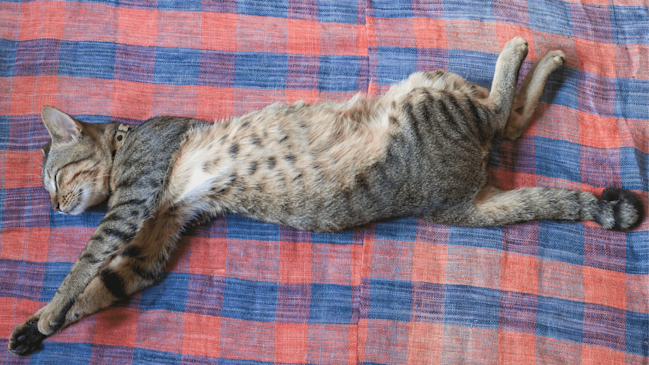
Side-sleeping has a few variations. The front paws and back legs can both be stretched out in opposite directions with toes pointed, or they can extend only their arms. This position indicates a cat who’s a go-getter. They don’t wait for opportunities to be handed to them — they make things happen for themselves. Unfortunately, many of these things are mischievous or naughty. It’s not unlikely for a side-sleeper to overindulge in food, play, or catnip. The side-sleeper knows how to have a good time and how to entertain themselves.
The Lion
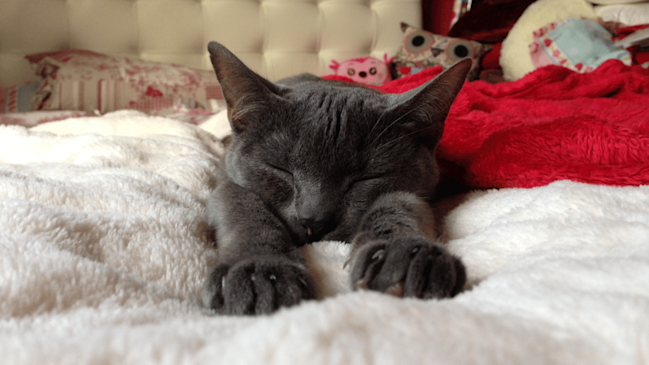
This position is a combination of the Meatloaf and The Side-Effect. The cat’s back paws are tucked under their body, but their front paws are straight out and pressed together. An example of this stance has been immortalized in the marble lion statues in front of the New York Public Library. Like Patience and Fortitude, the cat who sleeps in this position is courageous, wise, and loyal. They think of themselves as protectors and will defend their home against multi-legged intruders.
The Split-Level
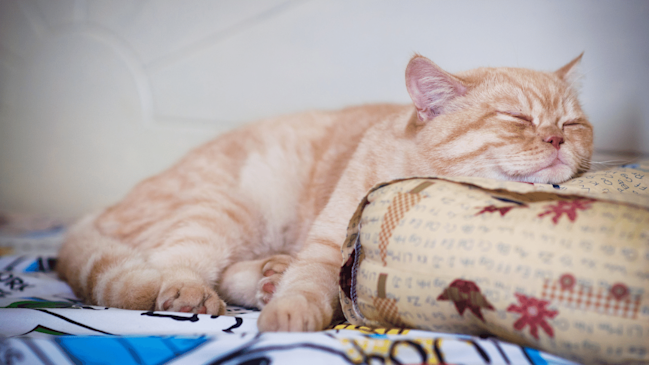
This statement-position is when a cat sleeps on two different levels. For example, the bottom half of the cat is on the floor, while their head is resting on the couch. This position appears to be extremely uncomfortable, but it has its fans. The cat who sleeps split-level-style is eccentric and is an original thinker. They’re adventurous, creative, and are constantly mixing things up because they simply can’t stand doing things the expected way. The Split-Level sleeper has an artistic soul.
The Contortionist
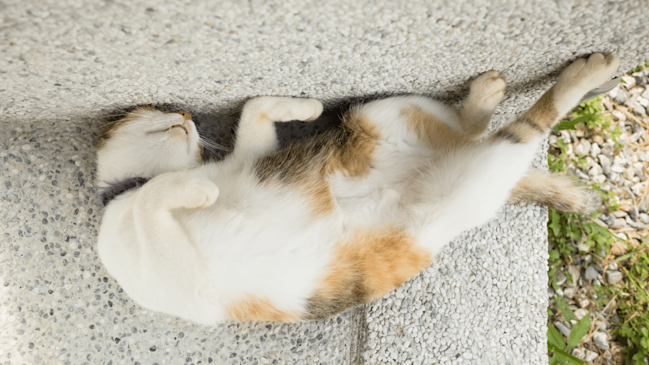
This aptly-named position is when a cat twists their body in an unimaginably weird position to get comfortable. This is the go-to sleeping position for a cat who loves to be the center of attention. They know not everybody can twist their body into a pretzel-shape and they love to show off how flexible they are. This position is the equivalent of a humblebrag. You can bet this cat is always Insta-ready and ~smizing~ from the top of the ears to the tip of their tail.
The Cinnamon Roll
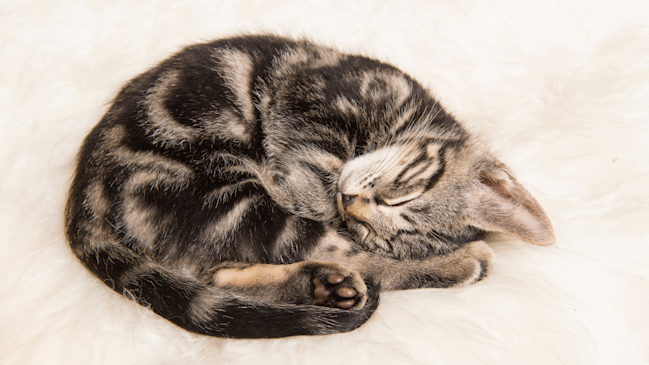
The CR is the most classic of the sleeping positions and is when a cat tucks themselves up into a tight ball. The cat who prefers this sleeping position is cautious, careful, but has a strong sense of self. They don’t need to do something outrageous or weird to get your attention. Don’t disturb them when they’re napping or they’re likely to get feisty!
The Jelly-Belly
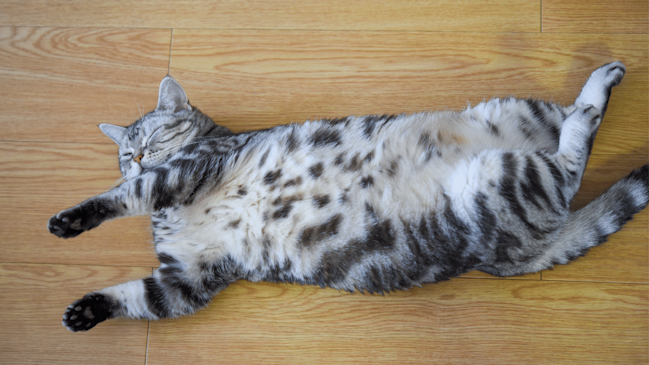
When you see a cat in this position: flat on their back, belly exposed, and in a deep state of relaxation, you know that they’re happy, at ease, and have mastered the art of pure concentrated bliss. When they expose their belly, they’re telling you how much they trust you. The Jelly-Belly is confident, charismatic, and can charm anyone — even someone who swears they don’t like cats.
The Pawty-Time Position
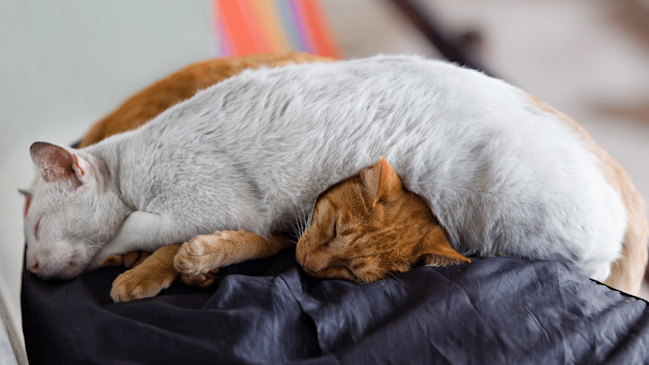
This is when two or more cats sleep together and usually with as much contact as possible. Sometimes one cat will use another one as a bed or they’ll sleep B2B (butt to butt). The cats that indulge in co-sleeping are progressive, affectionate, and love to socialize. Life is one big party for them. Anybody got any catnip or cat treats?
The Hidden Agenda
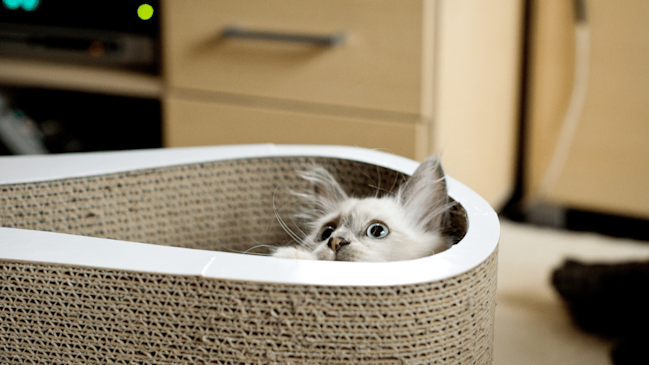
This is when a cat sleeps wedged-in and hidden somewhere. They like the challenge of sleeping in unexpected spots. This cat has the personality of a feline James Bond — they are daring, bold, and cagey. They need to be able to sleep and know that their enemies can’t get to them. They’re brilliant strategists and can outmaneuver anyone who tries to stop them from getting their sleep on.
The Touch
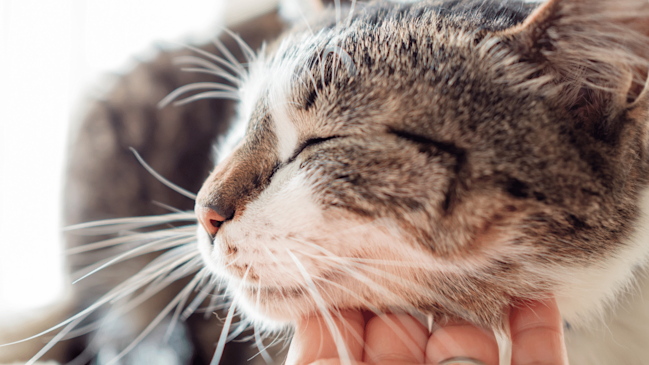
This position is when a sleeping cat has part of their body on their human. It can be their paw touching your arm, their foot on your leg, or their whole body on your lap. It shows that your cat is loving, caring, and relaxed. It comforts them being able to feel your physical presence. There’s no greater honor than having one cat stretched out on your legs while another one is sleeping underneath your arm.
